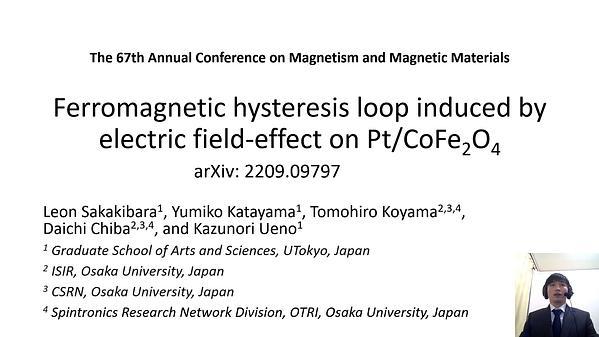Would you like to see your presentation here, made available to a global audience of researchers?
Add your own presentation or have us affordably record your next conference.
All of the polymorphs of pure ammonium iodide NH4I have space groups that are non-polar. However, we identify that when a fraction of the hydrogen is replaced by deuterons or when small percentages of iodide are replaced by bromide or potassium, polar phases can be established. In particular, the electric polarization of the following compounds can be switched by an applied electric field: (NH4)0.67(ND4)0.33I (where D is deuteron), NH4I0.91Br0.09 and NH4I0.94K0.06 according to pyroelectric current measurements. Magnetic susceptibility measurements indicate that the polar phases may be magnetic in origin. We explain our results by taking into account the notion that every reorienting NH4+ possesses a molecular magnetic moment that can couple with that of neighboring NH4+. The magnetic moments arise from the protons (H+) having to orbit in concert about the central nitrogen atom when the ion reorients. In the room-temperature phases, enough orbits are available to avoid mutual resonance, but below a critical temperature, a subset of these orbits become energetically inaccessible so neighboring NH4+ become mutually resonant. To avoid lattice instabilities from resonant forces, the NH4+ become ordered to establish a spiral modulation of its magnetic moments. A replacement of a fraction of H with D or I with Br or K breaks the spatial-inversion symmetry of the modulating vector so an electric polarization emerges. Our findings provide the potential of adding an extra ferroelectric dimension to hydrogen-bonded materials.
References:
F. Yen, Z. Zheng and Z. Si, Angewandte Chemie, 129(44), 13863-13866 (2017)
L. Meng, C. He and F. Yen, The Journal of Physical Chemistry C, 124, 17255−17261 (2020)
